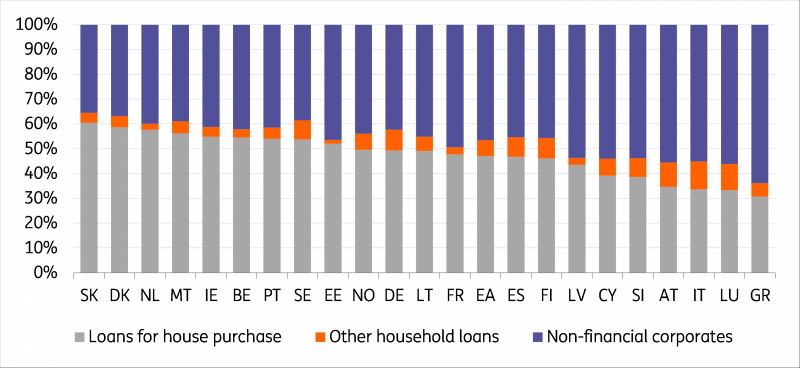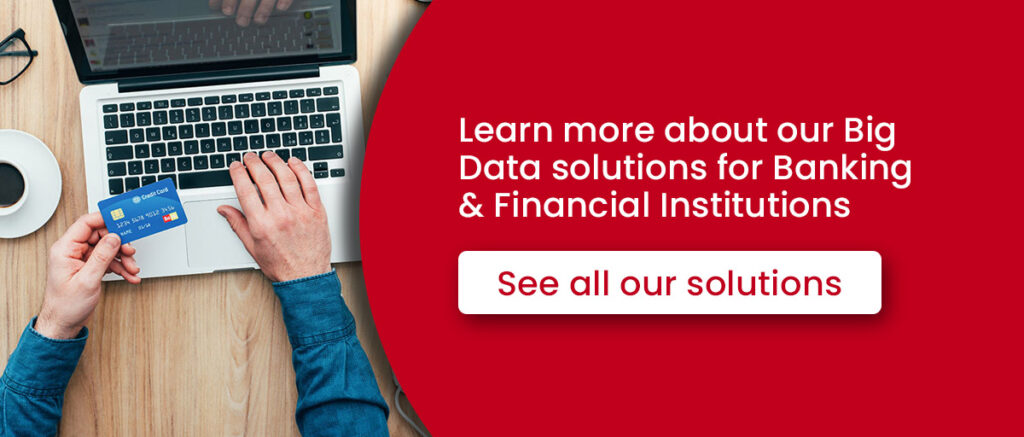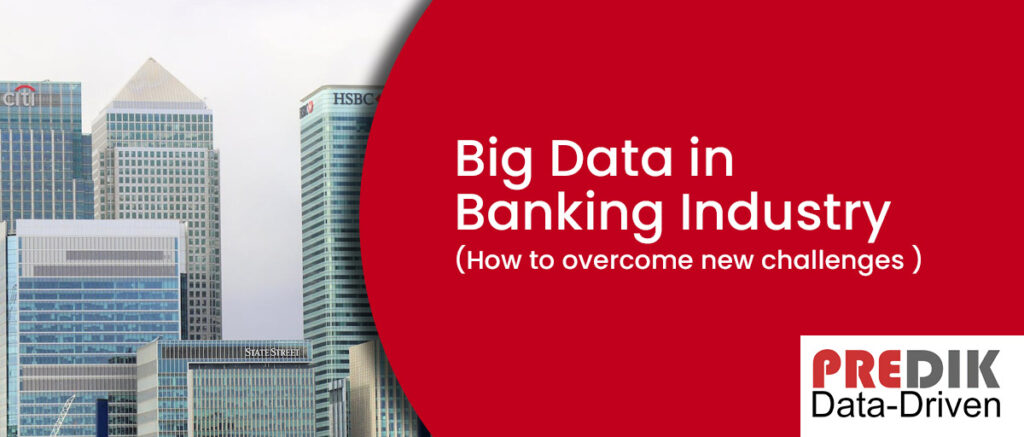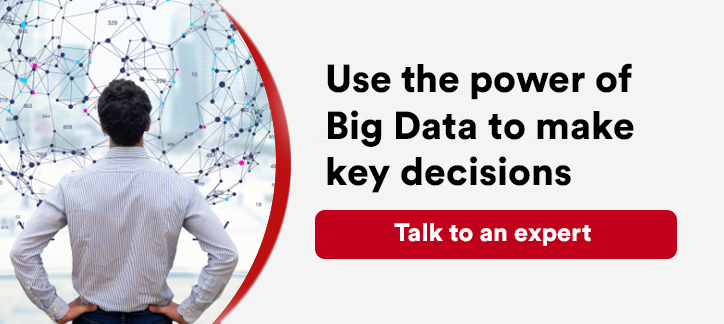Being in the Big Data industry for over 14 years has shown us how important it is for Banking Institutions to use the correct data sets.
Consider that Banking institutions generate massive amounts of daily data through countless transactions, customer interactions, and even third-party sources. Well, Big Data analytics can help these institutions make better use of this data.
In this article, we will explain the role of big data analytics in the banking industry, how it works, and the main benefits for the sector. We will also highlight real-life use cases of banking institutions already using Big Data and provide tips for a good implementation of data methodologies.
In this article we will explore:
Banking Sector: What to expect in 2023?
Considering some reports like ING’s Bank Outlook, we can expect that, as the banking industry navigates through 2023, it will face numerous challenges that will test its resilience.
Higher rates and inflation: One of the biggest challenges is the impact of higher rates and high inflation on debtors’ ability to repay their loans. Corporate books are expected to drive provisions, but larger corporates are better positioned than SMEs (Which are likely to have less pricing power and limited access to funding channels).
Mortgages: According to experts, we can expect mortgages to remain robust despite the slowing of housing markets. But banks with a larger share of floating-rate loans may face more pressure on loan quality.
On the other hand, banks with a higher share of fixed-rate mortgages will experience a slow movement in average lending rates.
Credit quality: Non-performing loan ratios declined across countries in 2022, but loan quality is likely to weaken from current levels. Banks categorizing a higher share of their loans as Stage 2 loans point to a weakening credit quality in the future.

The role of big data analytics in the Banking Industry
You know, the banking industry is highly competitive, and Big Data analytics provides a competitive edge to the banks adopting it.
Have you ever wondered how certain Banks can personalize their services according to their customers’ profiles? This is an example of why Big Data analytics is crucial for the industry. It enables to analyze large amounts of bank customers’ data and gain insights into their behavior and preferences.

Here is another example: A bank might use data analytics to identify the customers most likely to take out a loan and then offer them customized loan products according to their credit scores and financial situation. The bank can improve the customer experience and increase customer satisfaction by doing so.
So far, you are probably thinking Big Data analytics is just about gathering information and using it for customer service. But it’s much more than that. Besides, Big Data analytics allows banks to monitor and manage risk more effectively. Banks can use data analytics to identify potential risks and take proactive measures to mitigate them.
These measures reduce the likelihood of financial losses and maintain the banking system’s stability.
That is why the use of big data analytics in the banking industry is becoming more and more widespread. Banks invest in advanced analytics tools and technologies to gain a competitive edge and improve their operations.
In today’s fast-paced and highly competitive banking industry, making informed decisions quickly and effectively is essential for success.
Want to learn more about Big Data analytics? Read our complete guide
Ten Benefits of Big Data for Banking and financial Institutions
Improving Service and Enhancing the Customer Experience
Banking institutions can provide personalized customer service by analyzing data generated regarding user behavior and preferences. Banks can improve customer satisfaction and increase customer loyalty (and customer base) by providing personalized solutions.
Risk Assessment
Big Data Analytics can assess credit risk and detect fraudulent activities. This helps to minimize losses and improve the overall security of the banking system.
Improving Interest Rates
By analyzing customer data, banks can determine the best interest rates to offer according to their customer segmentation. The result? Increase customer satisfaction and improve profits for the bank.
Predictive Analytics
Predictive models can analyze and detect customer patterns and trends. This helps decision-makers identify potential problems and find solutions before they become major issues.
Want to learn more about Predictive Analytics? Read our full guide
Optimizing Customer Acquisition
Banks can determine the best acquisition strategies to reach new customers through data analysis. Institutions that are using different sources of information to understand their market are increasing their customer acquisition rates.
Improving Online and Mobile Banking
Big Data Analytics can be used to improve online and mobile banking services. By analyzing online customer behavior and preferences, banks can provide a better user experience in their digital platforms.
Enhancing Credit Scores
Data Analytics can improve credit scores by analyzing credit card usage patterns. Valuable insights can lead to an overall improvement in their customers’ financial health.
Optimizing Customer Retention
Bank institutions report improving customer retention rates after using Big Data solutions.
Improving Data Security & Fraud Detection
The security of sensitive financial data is becoming a primary concern for banks in today’s digital age. Because of the rise of cyber-attacks and data breaches, financial institutions must take a proactive approach to ensure their customers’ information stays secure.
By leveraging Big Data, banks can detect potential threats in real time and analyze vast amounts of data to gain valuable insights that can help improve their overall security posture.
For example, what happens when a customer suddenly begins making a large number of unusual transactions? Or changes their spending habits dramatically? Banks would have missed these signs in the past, but with the help of Big Data, they can quickly detect such anomalies and take appropriate action to prevent a potential breach.
Besides improving threat detection and intelligence, data analytics can also strengthen security protocols.
How are banking institutions using Big Data? (Three real-life use cases)
Let’s discuss five real-life use cases of banking institutions using Big Data to improve their business.
JPMorgan Chase
JPMorgan Chase & Co. uses open-source frameworks for large-scale data processing and storage.
The bank uses this information to gain insights into customer behavior and market trends, which helps them make informed decisions and offer personalized products and services.
JPMorgan has also integrated other Big Data technologies to improve the speed and efficiency of its data analysis processes. Using data technologies has proven beneficial for JPMorgan, as it has allowed the bank to gain a competitive advantage by making better use of its data assets.
CitiBank
Citibank has implemented a “data-first” approach to leverage Big Data in the banking industry. This approach involves collecting and analyzing vast amounts of data from various sources, such as customer transactions, market data, and social media, to gain insights into customer behavior and market trends.
“The company, in recent years, has adopted a fully Big Data-driven approach to drive business growth and enhance the services it provides to customers.”
Forbes
CitiBank uses this information to improve decision-making, enhance customer experience, and drive growth. Citibank has invested in advanced analytics tools to process and store large amounts of data.
The bank also integrates data from different sources to get a broader picture of its customers and markets. The results of this data-first approach have been significant, with Citibank reporting improved risk management, increased operational efficiency, and a better understanding of their customers.
HSBC
HSBC has transformed its wholesale banking operations through data and analytics. The bank has implemented a data-driven approach to improve decision-making, increase operational efficiency, and enhance the customer experience.
The bank has invested in advanced analytics tools, such as machine learning and artificial intelligence, to automate processes, identify new business opportunities, and better understand its customers.
Additionally, HSBC has created a centralized data management platform to store, manage, and analyze data from different parts of the organization. The results of this transformation have been positive, with HSBC reporting improved risk management, increased revenue, and a better understanding of its customers.
In conclusion
It is clear: Big Data has become an indispensable tool for banking institutions. By leveraging data insights from different sources, banks can make better decisions, improve customer experience, and enhance their competitive advantage. And with the continued growth of digital banking, the importance of Big Data will only continue to increase.
Consumers have become more demanding, and the economic panorama brings complicated challenges. Banks must invest in the necessary infrastructure and expertise to fully overcome a (possible) difficult year.
Besides, the potential applications of Big Data in banking are virtually limitless. From detecting fraud to predicting market trends, there’s no shortage of ways in which data analysis can help banks better serve their customers and achieve their business goals.



